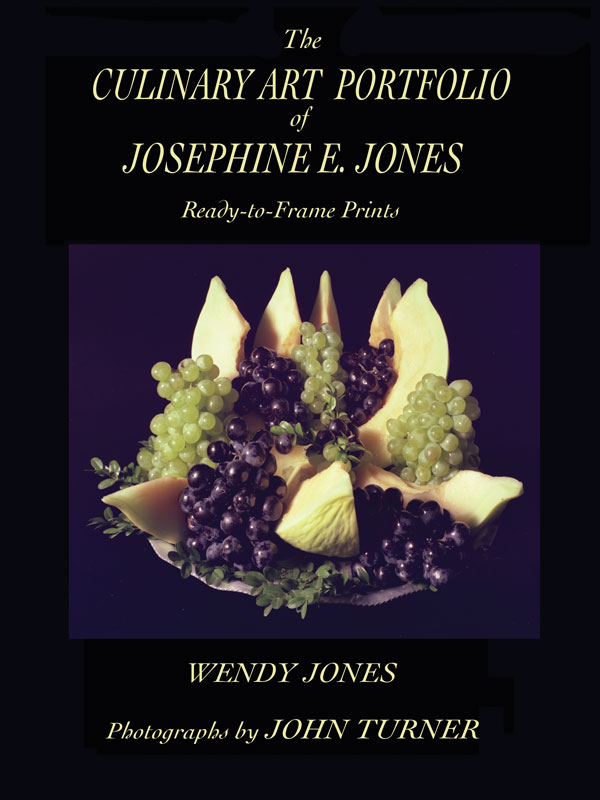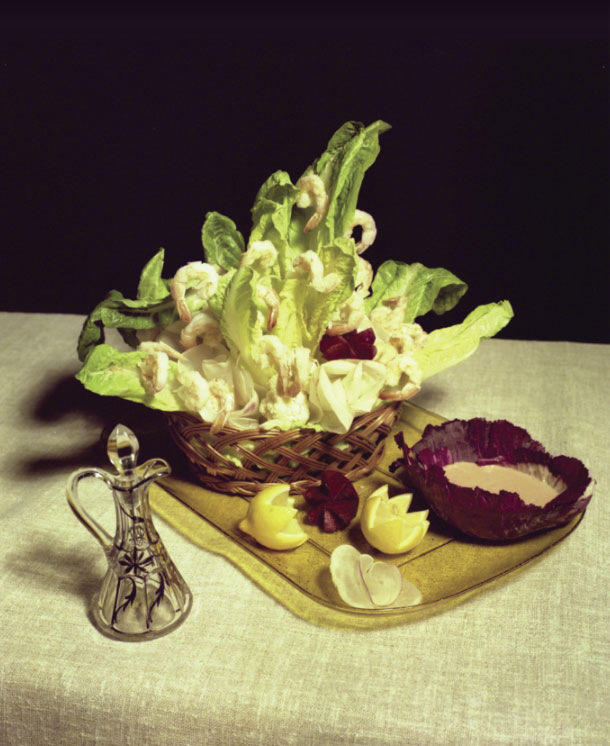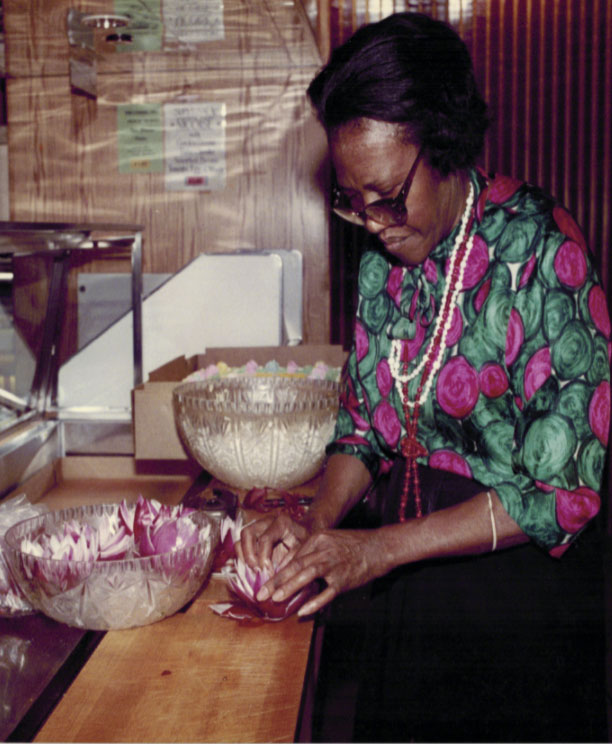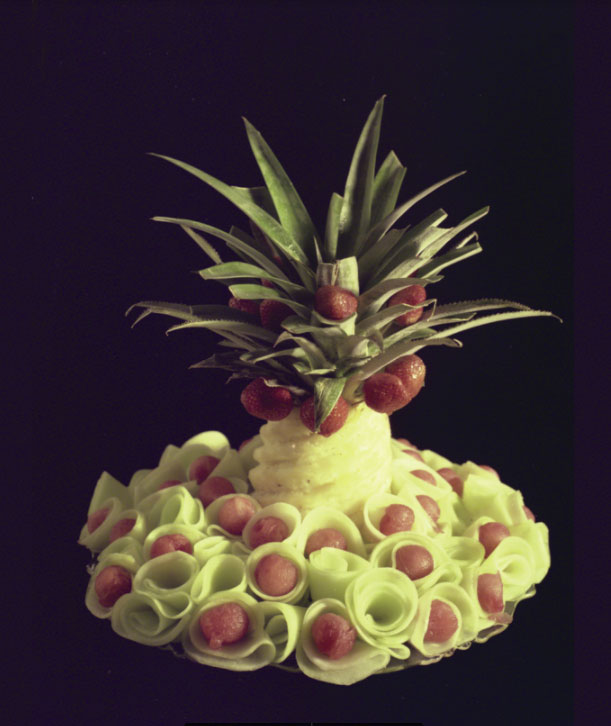Wendy Jones is an author, playwright, and the president of Ida Bell Publishing, LLC. Named after Ida B. Wells, the investigative reporter and social activist, the company was established with the purpose to publish the work of people of color, immigrants, all women, and other outsiders.
Wendy spent her early years in the kitchen helping her mother, Josephine E. Jones, who was head of the employees’ cafeteria at then-Standard Brands, now-Kraft Foods. She was a talented culinary artist and a Harlem activist. Wendy’s book, The Culinary Art Portfolio of Josephine E. Jones, is a unique tribute to her mother and the contributions she made to culinary art and to her community.
It is a pleasure to present this interview with Wendy Jones. She reminds us we don’t have to be a professional cook to create our own culinary art. We also learn about the loving bond Wendy had with her mother, and the lessons she learned from her. Wendy also shares insight about the process of being an independent book publisher and some lessons she learned.

RP: Wendy, what inspired you to publish The Culinary Art Portfolio of Josephine E. Jones?
WJ: The debut publication of Ida Bell Publishing was An Extraordinary Life: Josephine E. Jones, which focused on the life of Josephine E. Jones. In 1967, she was probably the first Black woman at a Fortune 500 company. Ms. Jones was head of the employees’ cafeteria at then-Standard Brands, now-Kraft Foods. She was also my mother.
The culinary art was supplementary in that book. I also made a large format copy. When I gave readings, I brought that large format copy to show the audience the culinary art.
Several people suggested I create another book featuring those photos. The color photographs in The Culinary Art Portfolio of Josephine E. Jones, printed on glossy paper, can also be removed and framed.
Opposite each photograph is a description of the ingredients, the processes used, and a story about the culinary art. In addition, there are quotes from my mother sharing her uplifting philosophy of life.
“The Culinary Art Portfolio of Josephine E. Jones” is an art book. It is about where art and food intersect.

RP: What was the biggest challenge you had to overcome as an independent publisher working on the book?
WJ: The biggest challenge I had to overcome showed up when I was publishing the first book.
First, I had to understand the difference between self-publishing and independent publishing. A self-publisher is a writer who submits her/his book to a company. There is no selection process. As long as the writer pays the fees, the company publishes the book.
An independent publisher is a writer who founds her/his own publishing company. She/he hires editors, illustrators, and a printer. The independent publisher then researches the best way to promote the book to its specific audiences. After creating a selection process, she/he publishes the work of others as well as her/his own work.
For instance, the British writers, Virginia and Leonard Woolf, founded Hogarth Press in 1917 to publish the writing of other members of the Bloomsbury Group as well as their own writing. They were independent publishers.
I immediately became a member of the Independent Book Publishers Association, which offers independent publishers webinars, discounts on services for publishers, as well as different ways to promote their books. The association is helping me to navigate the continuing challenges.
The main challenge I had with this book was making sure readers understood that it was neither a cookbook (there are no recipes) nor a how-to book. It is an art book. The Culinary Art Portfolio of Josephine E. Jones is where art and food intersect.
Looking through her artist’s eyes, my mother was seeing the neighborhood as it could be, not as it was when she arrived.

RP: How did your mother’s artistic approach most inspire your life and your own art?
WJ: Whenever my mother looked at anything, she saw the potential in it, the beauty in it. She inspired me to envision what I wanted to achieve and make it happen. My mother always said: “There is no such word as can’t.” That is why I am an independent publisher today.
In my writing, I aspire to the same precision with words that I saw her use when she placed a piece of fruit on a plate. And when I set my breakfast table, I arrange my bowl of yogurt, walnuts, and berries so that it’s aesthetically pleasing before I eat it.
RP: How did your mother and her art inspire her community?
WJ: As a Harlem activist, she worked with her neighbors to start an annual Spring Clean Up and successfully submitted an application to convince a New York City agency to replace the trees in front of the brownstones.
My mother also initiated and headed the Civilian Patrol. Along with the neighbors in the patrol, she discouraged the drug dealing that had been going on in the block.
Looking through her artist’s eyes, my mother was seeing the neighborhood as it could be, not as it was when she arrived.
I want readers to realize that they don’t have to be professional cooks to create their own culinary art.

RP: What do you hope the readers of your book will receive?
WJ: I want readers to realize that they don’t have to be professional cooks to create their own culinary art. When they set their table for a meal they can take into account the color, shape, and texture of the food before them and place it on the plate so that it pleases the eye. In this way, they will receive a certain amount of joy from their food even before eating it.
Even cooking can be approached in this way. Recently, I made a dish with eggplant as the central ingredient. First I cut up onions and sauteed them in olive oil in a cast iron pan. Then I cut up and added mushrooms, eggplant, and tomatoes. After sprinkling in oregano, basil, and powdered garlic, I added water.
As I was about to put the top on, I looked at the vegetables in the pan. The eggplant, mushrooms, and onions were all cream-colored or white. Only the tomatoes added color. I realized I needed another color. That’s when I cut up carrots to add to the pan. Now that there were red and orange accents in the dish, it was complete. According to my life partner, it tasted pretty good, too.
Art resides in the everyday. An appreciation of the art all around you will enrich your life.
RP: Where can we learn more about your book and how to order it?
Readers can learn more about The Culinary Art Portfolio of Josephine E. Jones and order it at two websites:
Ida Bell Publishing, LLC idabellpublishing.com
African American Literature Book Club: aalbc.com/books

Leave a Reply